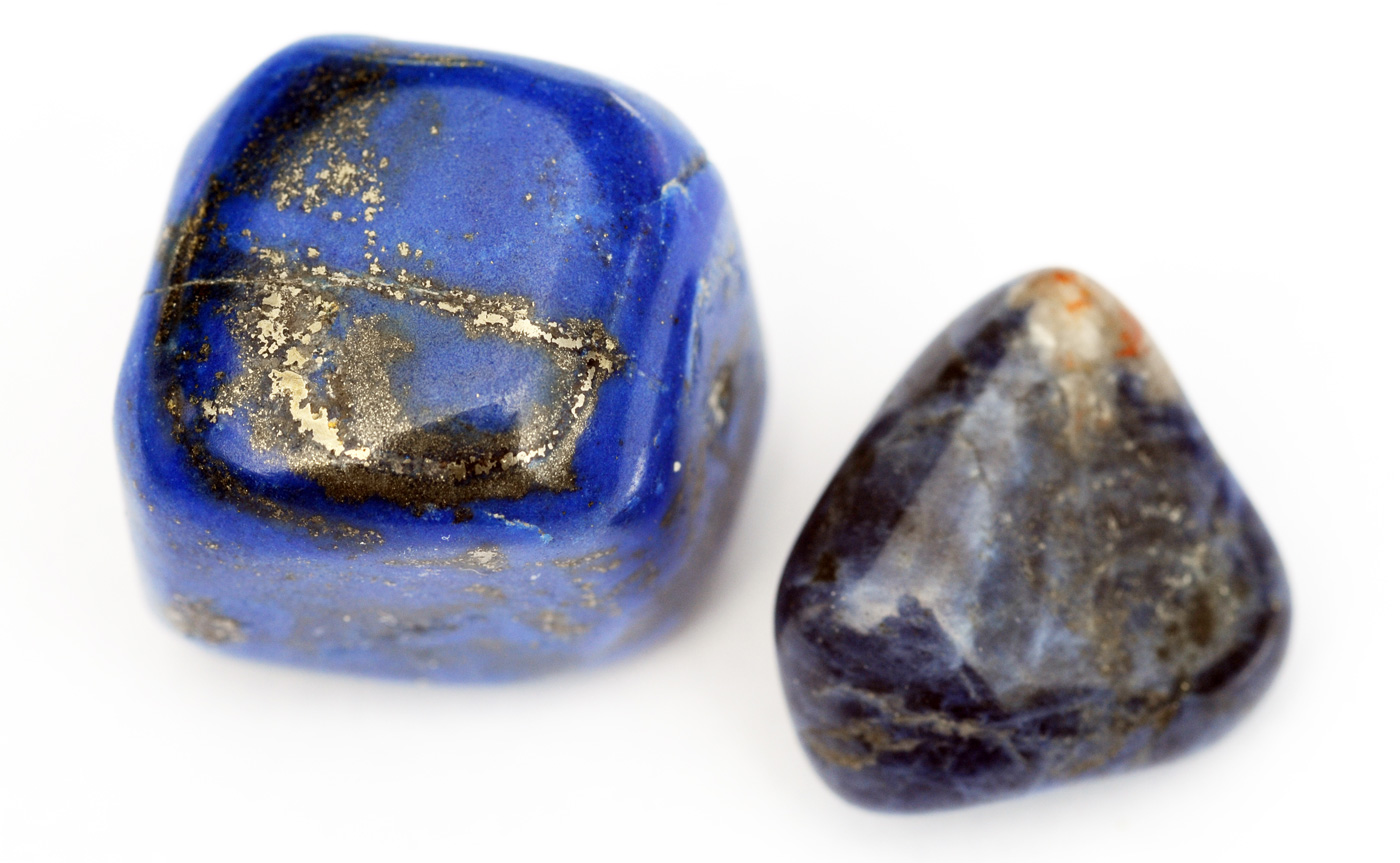Lapis Lazuli is a blue, greenish blue or purple blue rock with complex mixture of several minerals. It is also called lazurite in Badakhshan, Afghanistan. It is extensively used for making beads, rings, earrings and necklaces.
Lapis Lazuli is known for its royal blue color which is the most expensive blue stone of all. The most pleasuring color of lapis lazuli comes from Afghanistan (middle-east), popularly known as Afghan blue in trade. In Afghanistan several mosques walls are decorated with this stone. Argentinian lapis lazuli is also of a high quality. A pale blue variety occurs in the former USSR and in Chile Lapis lazuli from the USA is a darker shade of blue; Canadian specimens are lighter blue.
The structure of lapis lazuli includes veins of calcite (generally white in color) and yellow metallic pyrite crystals. Price of a lapis lazuli can be determined by its natural royal blue color, with or without crystals of calcite and pyrite. Lapis Lazuli barely having any crystals / veins of calcite but having crystals / veins of pyrite generally has a higher price.
Lapis Lazuli has been imitated by dyed sodalite, stained jasper, and by paste with inclusions of copper. Imitations lapis lazuli is also produced by Pierre Gilson in France, and has a very similar composition to natural lapis lazuli.
It is believed that lapis lazuli is one of the most powerful stones; it increases awareness, creativity, the skeletal system, and thyroid, unlocks mysteries, and helps to open one’s mind. It has been worn in the belief that it will protect the wearer from evil.
































Leave a Reply
You must be logged in to post a comment.